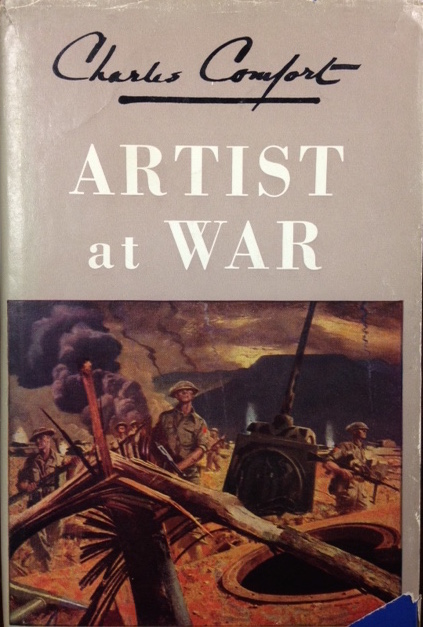
The Four Jameses by William Arthur Deacon, 1953, The Ryerson Press

The four Jameses
This edition of The Four Jameses by William Arthur Deacon was published by The Ryerson Press in 1953. These wise and witty portraits are a satirical look at four poets of the 19th and early 20th centuries – James Gay, James McIntyre, James MacRae and James Gillis— often referred to as the “cheese poets”, they may be among the worst poets ever to be published.
James Gay: Self-proclaimed Poet Laureate of Canada, and Master of All Poets,
What is a man, poor sinful man, or any of his race,
Without a greater power to keep him in his place?
We are nothing of ourselves, here we cannot stay;
Then read the noble writing of the Poet James Gay
James McIntyre: The Cheese Poet
From Ode to the Mammoth Cheese
We have seen thee, queen of cheese,
Lying quietly at your ease,
Gently fanned by evening breeze,
The fair form no flies dare seize.
All gaily dressed soon you’ll go
To the great Provincial show,
To be admired by many a beau
In the city of Toronto.
Note: A plaque commemorating “The big cheese 1866” has been erected by the Ontario Archaeological and Historical Sites Board at the intersection of Hwys 19 and 401, just outside Ingersoll, Ontario.
James D. Gillis: A Man of Parts
Bonny Birdie
A maid who dwells on yonder hill
Is certain cure for all my ills
And sure, I never loved until
I met my charming Birdie
Her toilet’s in the height of taste
Despite domestic cares and haste;
And O to span the artless waist—
The tempting waist of Birdie.
James MacRae: The Man from Glengarry
On women’s clothing in 1877…
How oft does lay the secret way
In which the game is played:–
A shapeless mass, by name a lass,
Is artfully arrayed,
Is neatly bound with metal round
And trimmings wisely made,
And padded o’er with worthless store
To cover unbetrayed
The sad defects, which one detects
When nature is displayed.

William Arthur Deacon’s Pens and Pirates, 1923, The Ryerson Press
Perhaps a far more interesting work by Deacon is his 1923 publication, Pens and Pirates. This is a compilation of articles, treatments and musings on a variety of subjects and personalities. Deacon goes to great lengths to explain his humour. This 1923 edition is clothbound with goldleaf stamping. It is a publisher’s edition as many pages are untrimmed. The elaborate endpapers feature an illustration by F.H. Varley. Deacon writes his own review of Pens and Pirates, entitled: He Took His Pen In Hand, A Review of Pens and Pirates by The Author:
“Having read little, and thought less, Mr. Deacon’s sole equipment for writing seems to have been the possession of a pen and a limited quantity of paper. That he had only a small number of sheets at his command may be inferred from the obvious fact that there has been no revision of the first drafts of his manuscripts. It is unthinkable that any sane man, given the opportunity to correct misstatements and to delete absurdities, would not have done so.”
He goes on to say, “Frankly, I do not know who to pity more, the publisher or the public. The book-buyer has no opportunity of examining his purchase until he has paid his money and taken it home, while the publisher doubtless employs a reader and should have known better than to enter upon such a venture….What I would advise each reader of this review to do is to buy a copy of the book, take it home and put it in the furnace, unread. In this way the first edition will be exhausted and I have ascertained that the publisher may be relied upon never to publish another. In no other way can you so effectively show your contempt for Mr. Deacon and his book, and in ridding the book-stores of the volume you will be performing a public-service of national importance.

Pens and Pirates endpaper illustration by F.H. Varley (the initials F.H.V. are visible below the skull and cross-bones on the chest)
Here a few extracts from Pens and Pirates:
The Dog ( Canus manhattanensis)
If I were going to be a dog in New York I would choose to be, not a high caste animal dressed up in coat and pants and muzzle, fettered by six feet of chain and the usages of good society, but rather an unknown mongrel, ill-mannered and unkempt, but free withal to explore every street and ash can in the city under the blessed guidance of a whimsical but perennial curiosity.
Local Color (A review of a W.J. Phillips Art Exhibition)
Here is part of his review: “I had to be dragged to see Mr. Phillip’s pictures. For I was subject to the great Canadian illusion that first-class painting started with Raphael and ended with G.F. Watts, or maybe Sir Joshua Reynolds; that this art was native to Italy, Holland and, in lesser degree, to France and England; that worth-while pictures could no more be painted on this side of the Atlantic than strawberries could be raised on the Arctic ice-packs. Do not our young men go to learn painting at Paris, while they learn medicine and surveying at Home? The sombre browns of the Dutch school, the protuberant stomachs of the Botticelli women, the winged cherubs flying about in the clouds – all these were foreign relics, musty and meaningless. There was something repelling, also, in the building itself. That huge, gaudy, bottom layer of a wedding cake, might fittingly house some things, but not Beauty – never that.
Then I stood before the pictures, and the prejudices vanished. I was standing on the shore of a Canadian lake, at my feet sand and pebbles, and then the water started, and stretched away, mile after mile, to the far shore. It was very still and quite hot. There was not a bird nor a cloud to be seen; the tall, rank grass beside me was motionless. It was about noon. I suppose I had unconsciously checked the time by the shadows, though I was not interested in anything but the blessed sight of that far shore. Often had I come out on lakes like that and found bodily rest in a long, steady look across quiet water. Smoothwater and Lake Sydney have the same unbroken shoreline opposite. Neither has any outlet to the west. My eye travelled north along the purple line – the old woodsman’s habit – looking for a portage. I saw a piece of yellow wood. It was the frame of the picture and I was back in the Industrial Bureau looking at Mr. Phillips’ Art Exhibition. There was a hum of talk, and I glanced back. There was no canoe, no packs, no partner pulling on his disreputable pipe – only some city people chattering about pictures. But, when I looked back at the wall, prepared to find a vanished lake, lo! there it was, stretching mile after mile, with a slight haze over it. And I could smell the water.”

William Arthur Deacon
William Arthur Deacon (1890-1977) was a Canadian literary critic and editor. Deacon was born in Pembroke, Ontario. He studied law in Winnipeg but eventually became a book review editor. He worked for the Manitoba Free Press, Saturday Night, the Toronto Mail and Empire, later the Globe and Mail. His original publication of The Four Jameses was published in 1927 by Graphic. The Four Jameses was revised in 1953 and published by The Ryerson Press.
Note: Walter Joseph Phillips (1884 – 1963) was an English-born Canadian painter and printmaker. He is credited with popularizing the colour woodcut in Canada.







 Eric Nicol was born in Kingston, Ontario in 1919. He received his B.A. from the University of British Columbia in 1941. After serving with the Air Force for three years, he returned to university to complete his M.A. He spent one year studying at the Sorbonne in Paris, then moved to London to write for radio and television. In 1951 he returned to Vancouver where he became a columnist for Vancouver’s The Province. Nicol published over 40 books, won the Stephen Leacock Medal for Humour three times and was appointed Member of the Order of Canada in 2000. Nicol died in 2011 at the age of 91.
Eric Nicol was born in Kingston, Ontario in 1919. He received his B.A. from the University of British Columbia in 1941. After serving with the Air Force for three years, he returned to university to complete his M.A. He spent one year studying at the Sorbonne in Paris, then moved to London to write for radio and television. In 1951 he returned to Vancouver where he became a columnist for Vancouver’s The Province. Nicol published over 40 books, won the Stephen Leacock Medal for Humour three times and was appointed Member of the Order of Canada in 2000. Nicol died in 2011 at the age of 91.











